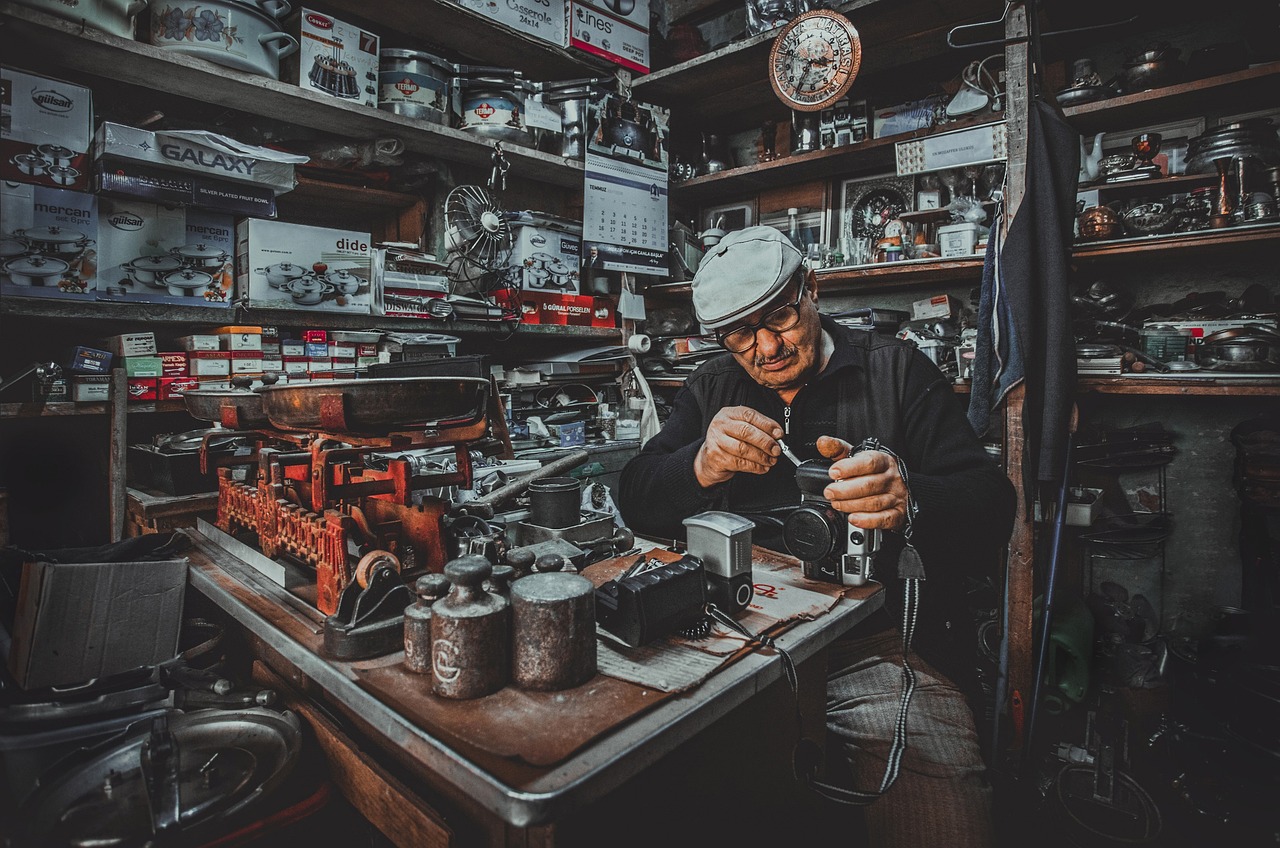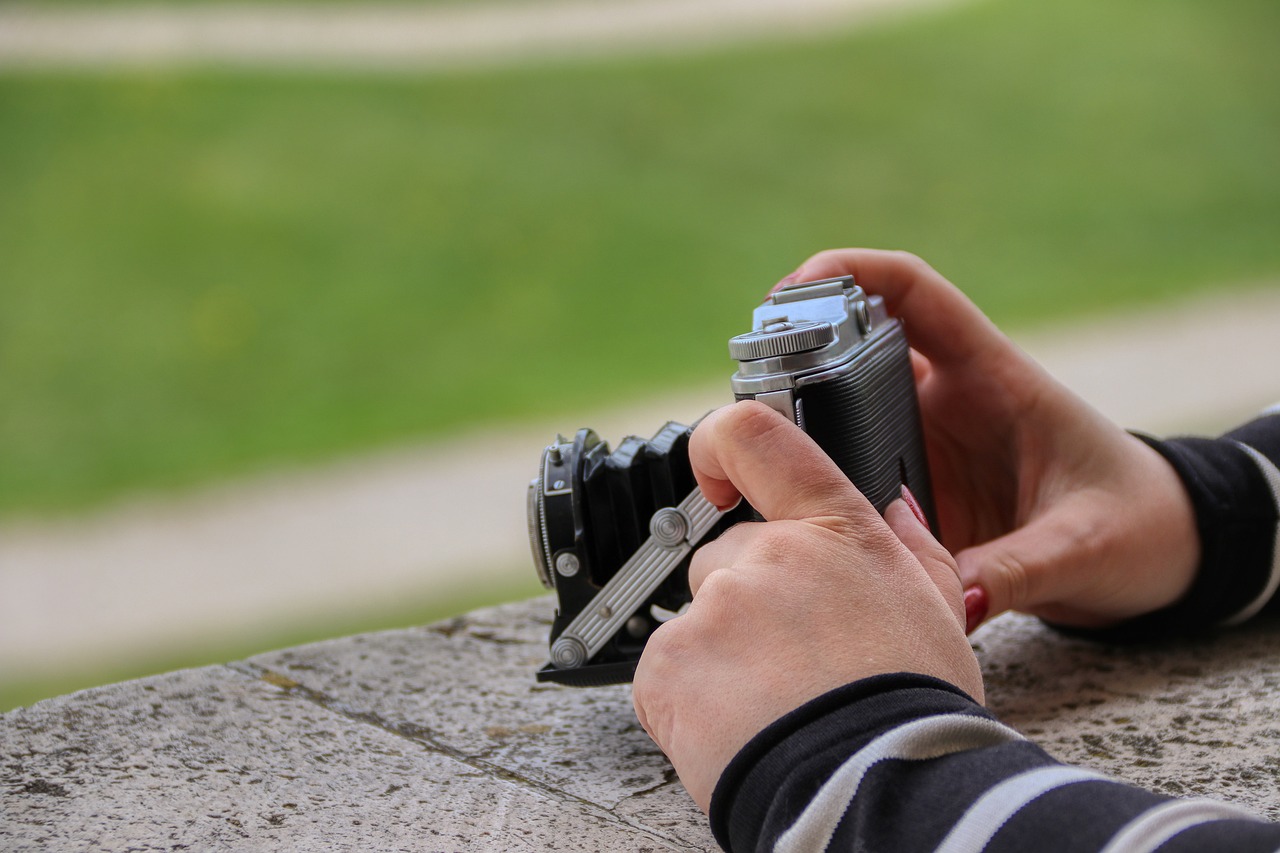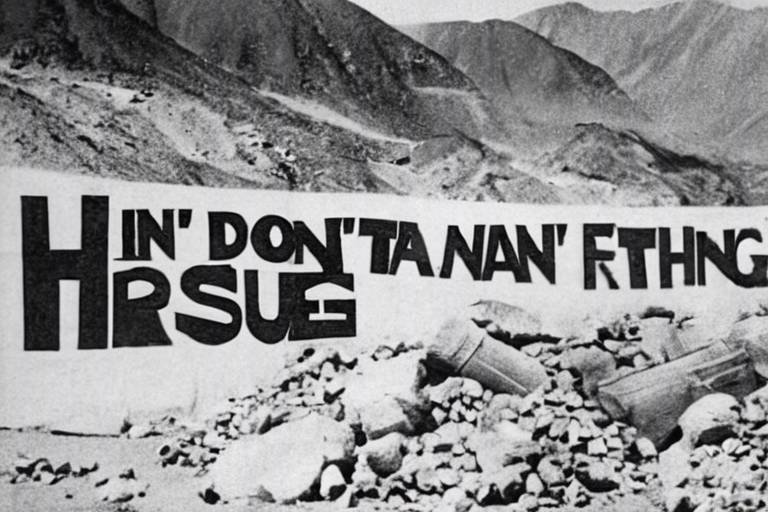The Importance of Archiving Historical Photographs
Preserving historical photographs is crucial for maintaining cultural heritage and documenting the past. These images capture moments in time, telling stories of bygone eras and providing a visual connection to our history. Imagine a world without the iconic photographs that have shaped our collective memory – it would be like losing pieces of a puzzle that make up our identity. Therefore, archiving historical photographs is not just about preserving images; it's about safeguarding our shared narrative for future generations to cherish and learn from.

Preservation Techniques
Preserving historical photographs is crucial for maintaining cultural heritage and documenting the past. This article explores the significance of archiving these images and the impact it has on preserving history for future generations.
When it comes to preserving historical photographs, various techniques and best practices play a vital role in ensuring their longevity and preventing deterioration over time. One of the key methods is proper handling and storage. By using archival-quality materials such as acid-free folders and boxes, photographs can be protected from environmental factors like light, humidity, and temperature fluctuations that can cause damage.
Additionally, digitization is a powerful preservation technique that allows for the creation of digital copies of physical photographs. This not only provides easier access to the images but also serves as a backup in case the original is lost or damaged. Through digitization, historical photographs can be shared widely while preserving the originals.
Furthermore, proper framing and display techniques can also contribute to the preservation of historical photographs. Using UV-protective glass and avoiding direct sunlight exposure can help prevent fading and deterioration. Conservation framing methods ensure that the photographs are mounted securely without causing damage.
Consolidating photographs in acid-free albums or enclosures, along with regular inspection and maintenance, are essential practices in preserving these valuable historical artifacts. By implementing a combination of preservation techniques, we can safeguard these photographs for future generations to appreciate and learn from.

Digital Archiving
Digital archiving plays a pivotal role in the preservation and accessibility of historical photographs in the modern era. By converting physical images into digital formats, these valuable pieces of history can be safeguarded from physical degradation and shared with a wider audience.
One of the key benefits of digital archiving is the ease of access it provides. Unlike traditional physical photographs that may be stored in limited locations, digitized images can be stored on various devices and platforms, allowing researchers, historians, and the general public to view them conveniently.
Moreover, digital archiving facilitates the sharing of historical photographs across different geographical locations. Through online platforms and databases, these images can reach a global audience, fostering greater awareness and appreciation for our collective heritage.
Additionally, digital archiving ensures the long-term preservation of historical photographs. By storing digital copies in multiple locations and formats, the risk of losing these valuable images to natural disasters or deterioration is significantly reduced, safeguarding them for future generations.

Metadata Organization
Metadata organization plays a vital role in the preservation and accessibility of historical photographs. By properly cataloging and organizing metadata, these images can be easily searched for and retrieved, ensuring their significance is not lost to time. Metadata includes essential details such as the date the photograph was taken, the location, the people depicted, and any relevant historical context. Through meticulous organization, researchers, historians, and the general public can gain valuable insights into the past through these visual records.

Backup and Storage
When it comes to preserving historical photographs, ensuring proper backup and storage is essential in safeguarding these valuable images for future generations. By creating backups and utilizing secure storage solutions, the risk of loss or damage to these historical treasures can be significantly reduced.
One effective method of backup is to store digital copies of historical photographs in multiple locations. This redundancy helps protect against data loss due to unforeseen circumstances such as hardware failure or natural disasters. Additionally, using cloud storage services can provide an off-site backup solution, further enhancing the security of the archived images.
Moreover, employing archival-quality materials for physical storage can help prevent deterioration of original prints and negatives. Acid-free folders, sleeves, and boxes are recommended for storing historical photographs to minimize the risk of damage from environmental factors such as light, humidity, and pollutants.
Creating a detailed inventory of archived photographs and their corresponding backups is crucial for efficient retrieval and management. Organizing photographs based on themes, time periods, or locations can streamline the search process and ensure easy access to specific images when needed.
Regularly monitoring the condition of both physical and digital backups is essential to identify any signs of degradation or data corruption early on. Periodic checks and maintenance routines can help preserve the integrity of historical photographs and prolong their lifespan for future generations to appreciate.

Restoration and Conservation
Restoration and conservation of historical photographs play a vital role in maintaining their original quality and preserving them for future generations to appreciate. The process involves intricate techniques and careful handling to ensure that these valuable images are protected from deterioration and damage over time. Professional conservators are trained in the art of restoring historical photographs, utilizing specialized equipment and materials to bring these images back to their former glory.
One of the key aspects of restoration is addressing any physical damage such as tears, stains, or fading that may have occurred due to age or improper storage. Conservators use delicate methods to repair these imperfections while preserving the authenticity and integrity of the original photograph. By employing expert restoration techniques, historical photographs can be saved from the ravages of time and displayed in their full splendor.
Conservation goes hand in hand with restoration, focusing on preventing further deterioration and ensuring the long-term preservation of historical photographs. This involves creating a stable environment for the photographs, including controlled temperature and humidity levels to prevent mold growth and fading. Additionally, proper storage materials such as acid-free paper and archival sleeves are used to protect the images from environmental factors.
Conservation ethics are also a crucial consideration in the restoration and conservation process. It is essential to adhere to ethical guidelines to maintain the authenticity and historical significance of the photographs. This includes documenting any alterations or interventions made during the restoration process to ensure transparency and respect for the cultural heritage embodied in these images.

Professional Services
Preserving historical photographs is crucial for maintaining cultural heritage and documenting the past. This article explores the significance of archiving these images and the impact it has on preserving history for future generations.
Discussing various methods and best practices for preserving historical photographs to ensure their longevity and prevent deterioration over time.
Exploring the benefits of digitizing historical photographs for easier access, sharing, and long-term preservation in the digital age.
Highlighting the importance of properly cataloging and organizing metadata for historical photographs to enhance searchability and retrieval.
Explaining the significance of creating backups and utilizing secure storage solutions to protect historical photographs from loss or damage.
Examining the processes and techniques involved in restoring and conserving historical photographs to maintain their original quality and appearance.
Professional services play a crucial role in the preservation and enhancement of historical photographs. By entrusting these images to skilled conservators and restoration experts, the integrity and authenticity of the photographs can be maintained. These professionals possess the expertise and tools necessary to carefully handle and treat historical photographs, ensuring their longevity and quality.
Exploring ethical considerations and guidelines in the conservation and restoration of historical photographs to ensure authenticity and respect for cultural heritage.

Conservation Ethics
Conservation ethics play a vital role in the preservation of historical photographs, ensuring that the integrity and authenticity of these images are maintained for future generations. When it comes to the conservation and restoration of historical photographs, ethical considerations are paramount. Professional conservators adhere to strict guidelines and principles to uphold the cultural significance of the photographs while respecting their historical context.
One of the key ethical considerations in conservation is the principle of minimal intervention. This principle emphasizes the importance of only making necessary repairs or alterations to historical photographs to preserve their original state as much as possible. By minimizing interventions, conservators aim to retain the authenticity and historical value of the photographs without compromising their integrity.
Additionally, transparency and documentation are essential ethical practices in conservation. Conservators meticulously document all interventions, treatments, and changes made to historical photographs, providing a clear record of the restoration process. This transparency not only ensures accountability but also helps future conservators understand the history of the photograph's conservation and make informed decisions.
Respect for cultural heritage and historical context is another fundamental aspect of conservation ethics. When working with historical photographs, conservators must consider the cultural significance of the images and the context in which they were created. By respecting the cultural heritage embodied in the photographs, conservators can preserve their historical value and significance for future generations.
Furthermore, ethical conservation practices prioritize the long-term preservation of historical photographs. Conservators use archival-quality materials and follow best practices to ensure the stability and longevity of the photographs. By employing sustainable conservation methods, conservators aim to protect the photographs from deterioration and damage, allowing them to be enjoyed by future generations.
Frequently Asked Questions
- Why is archiving historical photographs important?
Archiving historical photographs is crucial as it helps preserve cultural heritage and document the past for future generations. By safeguarding these images, we ensure that valuable historical moments are not lost to time.
- What are some common preservation techniques for historical photographs?
Common preservation techniques include storing photographs in acid-free materials, controlling temperature and humidity levels, and limiting exposure to light. These methods help prevent deterioration and ensure the longevity of the images.
- How does digital archiving benefit historical photographs?
Digital archiving allows for easier access, sharing, and long-term preservation of historical photographs in the digital age. By digitizing images, we can protect them from physical damage and make them more widely accessible.
- Why is metadata organization important for historical photographs?
Properly cataloging and organizing metadata for historical photographs enhances their searchability and retrieval. Metadata provides valuable information about the images, such as dates, locations, and subjects, making them easier to categorize and find.
- What role do professional conservators play in the preservation of historical photographs?
Professional conservators are experts in restoring and conserving historical photographs to maintain their original quality and appearance. They use specialized techniques to repair damage and ensure the longevity of these valuable images.



















